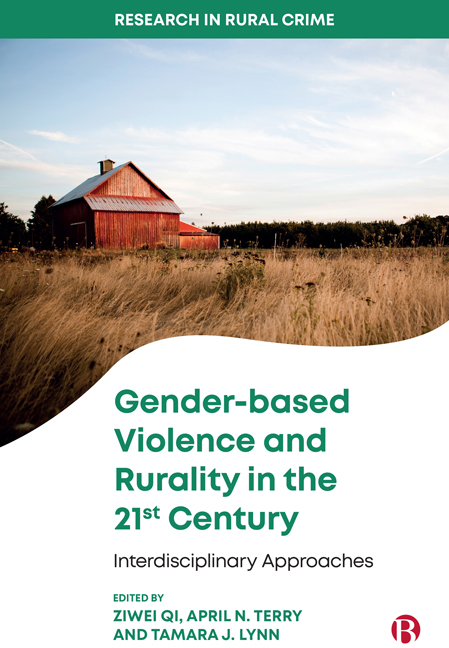Book contents
- Frontmatter
- Contents
- Series Preface
- List of Figures and Table
- List of Abbreviations
- Glossary
- Notes on Contributors
- Foreword
- 1 Understanding Rurality and Gender-based Violence
- PART I Rurality and Gender-based Violence
- PART II Beyond the Rural/Urban Divide: Critical Issues in Gender-based Violence
- PART III Access to Rural Justice: Economic Consequences and Policy Implications
- Index
8 - Urban and Rural Media Reporting on Violence Against Transgender People
Published online by Cambridge University Press: 20 January 2024
- Frontmatter
- Contents
- Series Preface
- List of Figures and Table
- List of Abbreviations
- Glossary
- Notes on Contributors
- Foreword
- 1 Understanding Rurality and Gender-based Violence
- PART I Rurality and Gender-based Violence
- PART II Beyond the Rural/Urban Divide: Critical Issues in Gender-based Violence
- PART III Access to Rural Justice: Economic Consequences and Policy Implications
- Index
Summary
Introduction
In the summer of 2020, six Black transgender women were murdered during a nine-day period in the United States (Devin-Norelle, 2020). Two of these women, Shakiie Peters and Draya McCarty, were Louisiana residents. Though the two murders occurred in very different demographic areas, with Shakiie being killed in a town of under 5,000 and Draya in the state capitol, local media coverage of both deaths was criticised by the victims’ friends, families and transgender advocates, for misgendering and deadnaming the victims. The similar treatment of victims despite widely different localities and reporting markets raises questions regarding the ways that different media outlets present transgender victims of violence.
Although approximately 7.1 per cent or 20 million Americans identify themselves as lesbian, gay, bisexual and transgender (LGBT; Jones, 2022) and roughly two million Americans are transgender (Flores et al, 2016), there is a dearth of government data on this segment of the population. For example, the United States Census does not collect gender data beyond the presumed binary of biological sex (Stotzer, 2017). The lack of available data contributes to the invisibility of the trans community and minimises the economic, emotional and physical violence that transgender people experience. Similarly, the Federal Bureau of Investigation's (FBI) Uniform Crime Reporting (UCR), widely recognised as the country's most complete official crime dataset, records gender in the binary. For example, murder victims’ sex is reported as Male, Female or Unknown (FBI, 2020a). However, the UCR does include transgender and non-binary people in their hate crime statistics. In 2019, law enforcement agencies reported fewer than 200 incidents that targeted an individual's gender identity (FBI, 2020b). Advocates argue this is likely a vast undercount of the actual number of incidents, as victimisation data suggests that fewer than half of hate crime incidents are reported to the police (OVC, 2018). Additionally, though hate crimes statistics may reflect a person was murdered due to their gender identity, the victim's gender is not reflected in the UCR, which poses challenges for those seeking to understand the prevalence and magnitude of homicidal violence perpetrated against the transgender community.
- Type
- Chapter
- Information
- Gender-based Violence and Rurality in the Twenty-first CenturyInterdisciplinary Approaches, pp. 107 - 123Publisher: Bristol University PressPrint publication year: 2023

